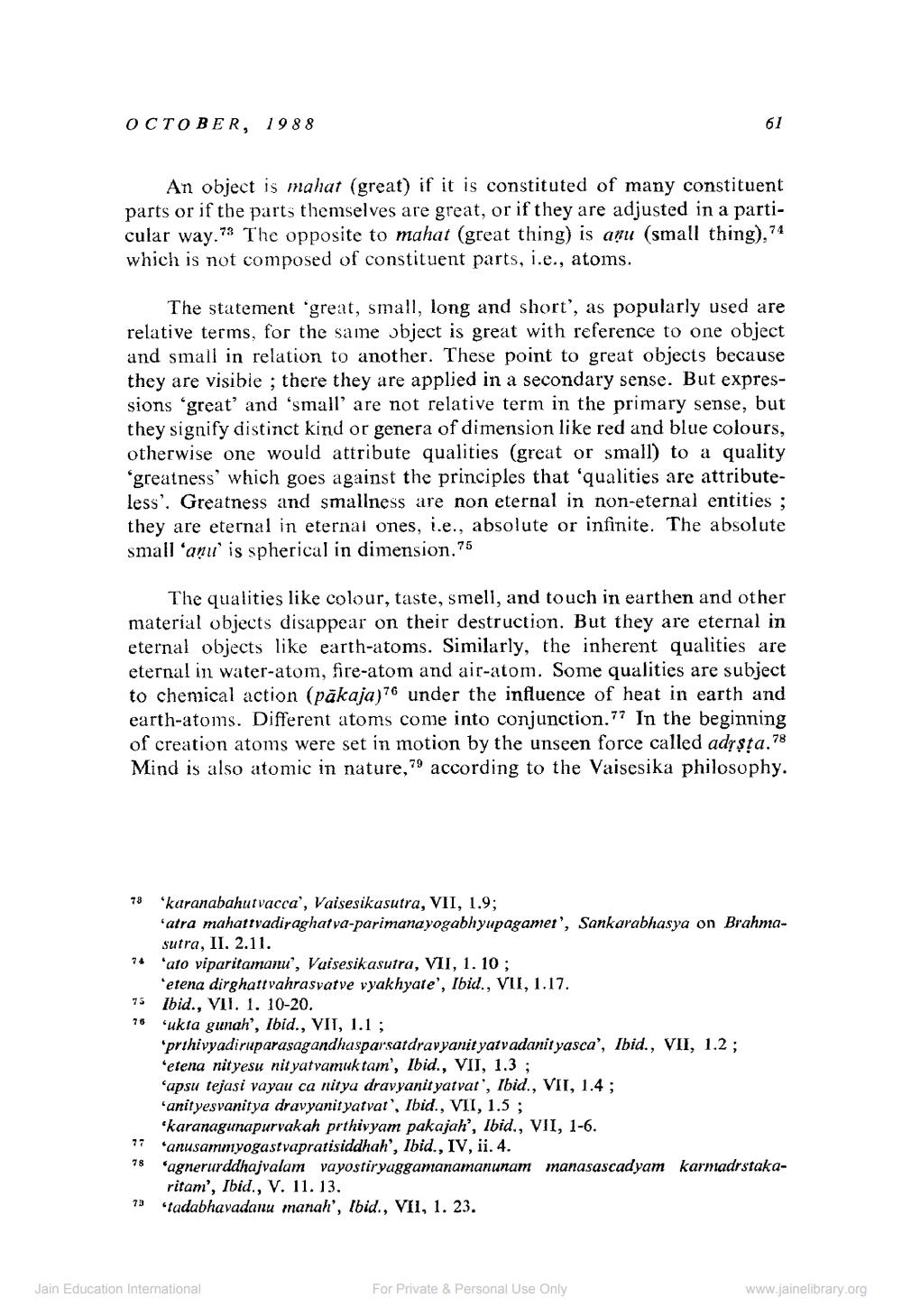________________
OCTOBER, 1988
An object is mahat (great) if it is constituted of many constituent parts or if the parts themselves are great, or if they are adjusted in a particular way.73 The opposite to mahat (great thing) is aņu (small thing),74 which is not composed of constituent parts, i.e., atoms.
The statement 'great, small, long and short', as popularly used are relative terms, for the same Object is great with reference to one object and small in relation to another. These point to great objects because they are visible ; there they are applied in a secondary sense. But expressions 'great' and 'small' are not relative term in the primary sense, but they signify distinct kind or genera of dimension like red and blue colours, otherwise one would attribute qualities (great or small) to a quality ‘greatness' which goes against the principles that 'qualities are attributeless'. Greatness and smallness are non eternal in non-eternal entities ; they are eternal in eternal ones, i.e., absolute or infinite. The absolute small 'anu' is spherical in dimension.75
The qualities like colour, taste, smell, and touch in earthen and other material objects disappear on their destruction. But they are eternal in eternal objects like earth-atoms. Similarly, the inherent qualities are eternal in water-atom, fire-atom and air-atom. Some qualities are subject to chemical action (päkaja)76 under the influence of heat in earth and earth-atoms. Different atoms come into conjunction.77 In the beginning of creation atoms were set in motion by the unseen force called adışța.78 Mind is also atomic in nature,79 according to the Vaisesika philosophy.
78 'karanabahutvacca', Vaisesikasutra, VII, 1.9;
*atra mahattvadiraghatva-parimanayogabhyupagamet', Sankarabhasya on Brahmasutra, II. 2.11. ‘ato viparitamanu, Vaisesikasutra, VII, 1. 10; ‘etena dirghattvahrasvatve vyakhyate', Ibid., VII, 1.17. Ibid., VII. 1. 10-20. "ukta gunah', Ibid., VII, 1.1 ; 'prthivyadiruparasagandhasparsatdravyanit yatvadanit yasca', Ibid., VII, 1.2; 'etena nityesu nit yatvamuktam', Ibid., VII, 1.3; ‘apsu tejasi vayau ca nitya dravyanit yatvar', Ibid., VII, 1.4; 'anityesvanitya dravyanit yatvat', Ibid., VII, 1.5 ;
"karanagunapurvakah prthivyam pakajah', Ibid., VII, 1-6. 77 anusammyogastvapratisiddhah', Ibid., IV, ii. 4. 78 Wagnerurddhajvalam vayostiryaggamanamanunam manasascadyam karmiadrstaka
ritam', Ibid., V. 11. 13. 70 tadabhavadanu manah', Ibid., VII, 1. 23.
Jain Education International
For Private & Personal Use Only
www.jainelibrary.org




